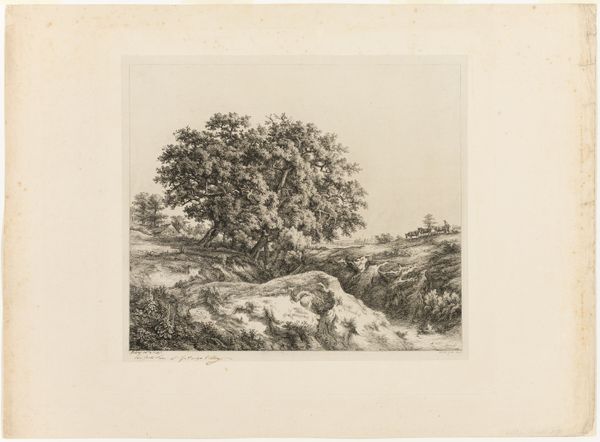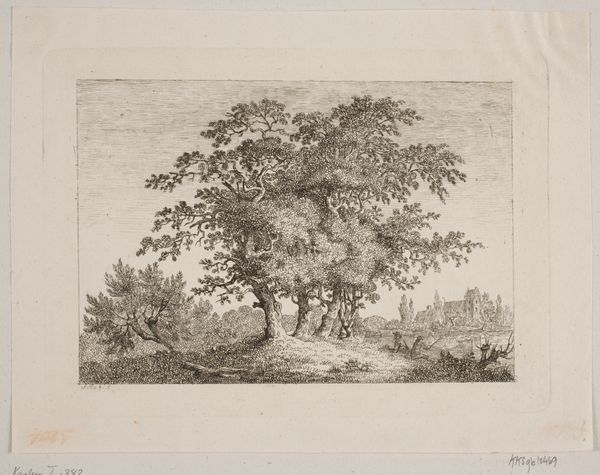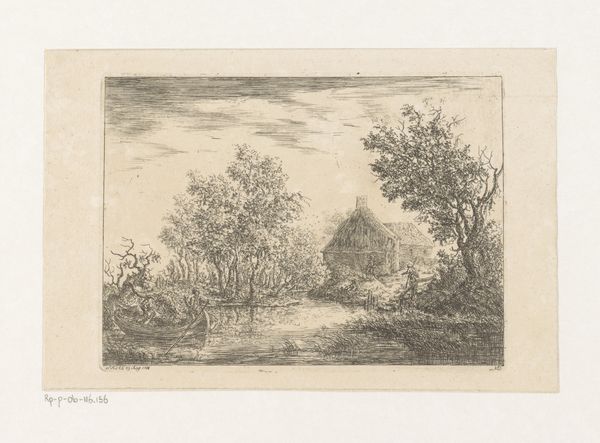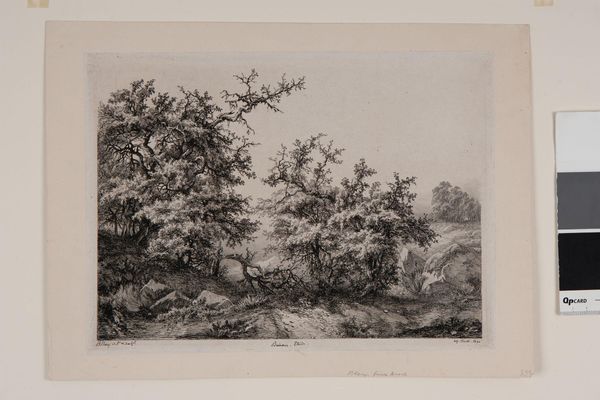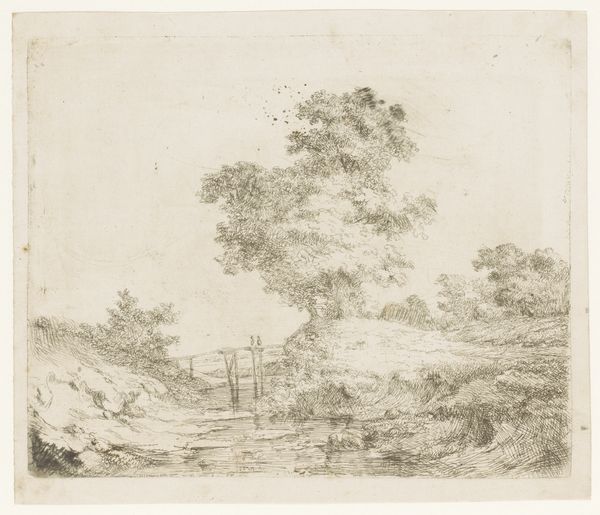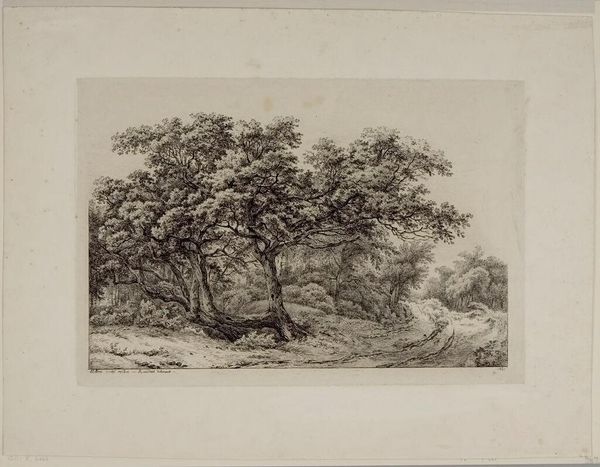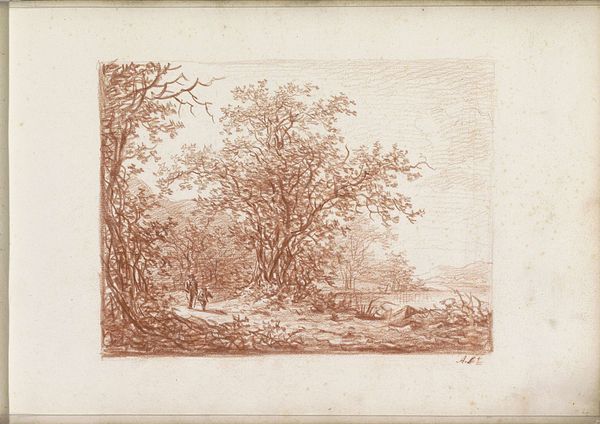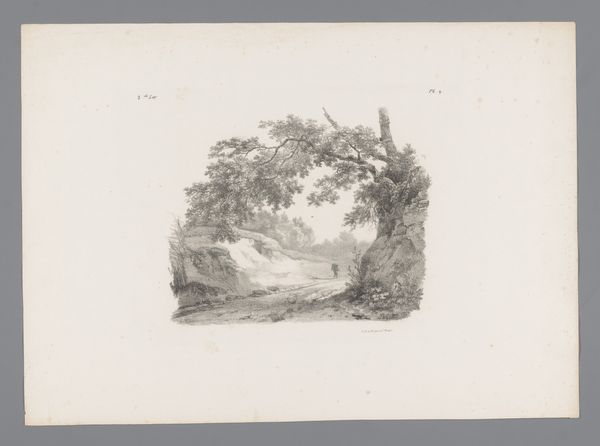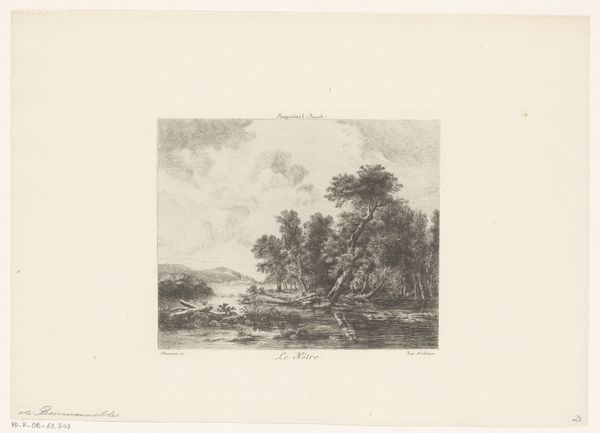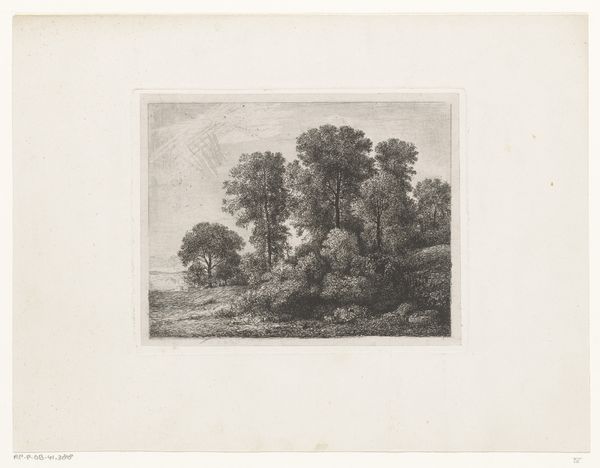
drawing, tempera, print, etching, paper
#
drawing
#
tempera
# print
#
organic shape
#
etching
#
landscape
#
paper
#
romanticism
Dimensions: 204 × 297 mm (plate); 317 × 456 mm (sheet)
Copyright: Public Domain
Curator: At first glance, it presents itself as an intimate encounter with nature. A study, perhaps? Editor: It’s serene, almost dreamlike, the textures so delicately rendered...but there’s also a sense of loneliness, of being profoundly still, suspended somehow. Curator: Precisely! Eugène Blery created this print, an etching titled "The Two Oaks, Fontainebleau," around 1842. You notice the medium; Blery uses etching, drawing, and tempera. It resides here at the Art Institute of Chicago, if you wish to see it for yourself. Editor: Two oaks—they definitely dominate the visual field. I’m immediately drawn to the gnarled branches and the sense of rootedness that these trees emanate. There is so much symbolism inherent in trees and nature; were the placement of the trees and this specific forest chosen to highlight contemporary class disparity? The painting feels like a meditation, one that perhaps hints at the value of connection, as highlighted by these two central oaks in contrast with the single, isolated trees that litter the background. Curator: Trees do occupy a central place in human consciousness and across cultures: the tree of life, sacred groves, the power of nature... these ancient oaks, presented in a highly industrialized France in the mid-1800s, would signal both resilience and timelessness, values deeply cherished during times of rapid transformation. Romanticism emphasized emotional experience and individual subjectivity, but the forest landscape—what does it symbolize in broader society? Editor: These Romantic-era landscapes rarely depict farmworkers or anyone experiencing rural hardship. Instead, nature serves as a space free of such markers of industrial disruption; it almost seems as if the political turbulence that arose because of the Industrial Revolution didn’t permeate into spaces for artmaking, highlighting questions surrounding in whose favor and at whose expense society and artwork can exist. Curator: I think what you highlight about accessibility is critical, because at a certain point, representations of a bucolic space may appear devoid of complex political or racial stratification, further allowing us to appreciate, through the language of art, this forest and nature space. Editor: In considering the broader legacy of "The Two Oaks", I now see that what persists through the image—and time—is this invitation to pause and feel deeply. I want to consider nature, identity, class, race and even gender in relationship with this artmaking space. Curator: Ultimately, this return to images endows the art-historical narrative that influences so many fields. By carefully interpreting the artistic choices made at this time, it becomes a touchstone across art movements. Thank you.
Comments
No comments
Be the first to comment and join the conversation on the ultimate creative platform.
